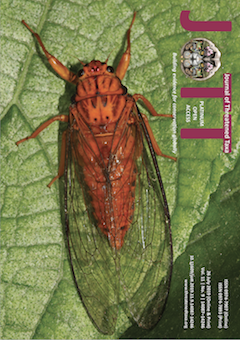Species richness and abundance of monogonont rotifers in relation to environmental factors in the UNESCO Sakaerat Biosphere Reserve, Thailand
Main Article Content
Abstract
The UNESCO Sakaerat Biosphere Reserve plays an important role in nature conservation and environmental protection. Previous focus on terrestrial habitats and neglect of aquatic ecosystems has resulted in an incomplete picture of biodiversity of the area. Based on the first investigation of planktonic diversity, rotifers were collected seasonally at five localities from September 2013 to May 2014 using a Schindler-Patalas plankton trap and a plankton net. Fifteen families, 25 genera and 71 species of rotifers were identified. The most diverse families were Lecanidae, Brachionidae, Lepadellidae, and Trichocercidae, accounting for 80% of the total species count. The maximum species richness was reported at the reservoir, with 57 species (80% of the total), while the minimum species richness (34) was observed at the ponds. The rainy season had the highest density, followed by winter and summer, with 149.15 N/l from an intermittent stream, and 95.43 and 50.68 N/l from a pond, respectively. Most of the sampling sites at the three seasonal occasions were dominated by a planktonic species Polyarthra vulgaris. The results indicate that the seasonal variation of the rotifer assemblage is related to the seasonal variation of physicochemical parameters.
Article Details
Authors own the copyright to the articles published in JoTT. This is indicated explicitly in each publication. The authors grant permission to the publisher Wildlife Information Liaison Development (WILD) Society to publish the article in the Journal of Threatened Taxa. The authors recognize WILD as the original publisher, and to sell hard copies of the Journal and article to any buyer. JoTT is registered under the Creative Commons Attribution 4.0 International License (CC BY), which allows authors to retain copyright ownership. Under this license the authors allow anyone to download, cite, use the data, modify, reprint, copy and distribute provided the authors and source of publication are credited through appropriate citations (e.g., Son et al. (2016). Bats (Mammalia: Chiroptera) of the southeastern Truong Son Mountains, Quang Ngai Province, Vietnam. Journal of Threatened Taxa 8(7): 8953–8969. https://doi.org/10.11609/jott.2785.8.7.8953-8969). Users of the data do not require specific permission from the authors or the publisher.

